Although it is a rare disease, uveal melanoma is the leading primary eye cancer in adults. After treatment of the primary tumor, about half of patients will develop metastases, usually in the liver, which is when the disease becomes life-threatening. That’s where the interventional radiologists at Thomas Jefferson University Hospital in Philadelphia step in.
For almost 15 years, IRs have worked closely with medical oncologist colleagues and other clinicians as part of the Metastatic Uveal Melanoma (MUM) Multidisciplinary Center. Jefferson is a national referral center for MUM. Many of the MUM patients were previously treated for their uveal melanoma at Jefferson’s own Wills Eye Hospital, a leading eye care facility just down the street.
Uveal melanoma acts very differently from skin melanoma. Uveal melanoma spreads via the bloodstream, often heading toward the liver. More than 90% of patients whose uveal melanoma spreads develop their metastases in the liver. Therefore, IRs get involved as soon as a metastasis is suspected, and liver-directed therapy is often first-line treatment.
The center performs more than 650 hepatic embolizations a year for MUM patients, according to David Eschelman, MD, FSIR, co-director of the MUM Multidisciplinary Center and co-director of the division of interventional radiology.
“Certainly, having medical oncology and interventional radiology working very closely together for the benefit of patients with this disease affords them more treatments than the standard of care—ineffective systemic treatments typically offered by medical oncology,” Dr. Eschelman says.
Treatment options include immunoembolization, radioactive microspheres, chemoembolization and percutaneous hepatic perfusion. Surgery and ablation are rare because there are often multiple liver tumors.
Immunoembolization was developed at Jefferson to treat this disease. Few centers in the country specialize in the treatment of patients with uveal melanoma, and experience with immunoembolization outside of Jefferson is very limited. With this treatment, cytokines are injected directly into the arteries supplying the liver to stimulate an immune response combined with embolization of the hepatic artery. The agent used is granulocyte-macrophage colony-stimulating factor. According to the MUM program, median survival of patients starting treatment using immunoembolization is almost two years.
While chemoembolization is a more common treatment for multiple liver tumors, the agent Jefferson IRs use—carmustine or BCNU—hasn’t been used much at other places, according to Carin Gonsalves, MD, FSIR, co-director of the division of interventional radiology.
Finely tuned machine
The multidisciplinary program was created because many of these patients were being referred to Jefferson medical oncologist Michael Mastrangelo, MD, who teamed up with IR Kevin Sullivan, MD, FSIR, who is now the clinic medical director at Preferred Vascular in Macon, Georgia.
“Patients with uveal melanoma metastatic to the liver have very poor survival, and there were no good treatment options available when I began treating these patients,” Dr. Sullivan explains. “A report from MD Anderson Cancer Center demonstrated improved survival in uveal melanoma treated with chemoembolization, so we began treating these patients in a similar manner.”
A few years later, medical oncologist Takami Sato, MD, PhD, director of the Metastatic Uveal Melanoma Program at Jefferson, joined the team, which began focusing on innovative treatment regimens, ultimately leading to the immunoembolization protocol.
The program is a finely tuned machine after so many years. “It’s a great working relationship between the medical oncologist and the IR,” Dr. Gonsalves says. “It’s 50/50, meaning that they respect our opinion and we respect theirs and nobody’s dominating over the other. We’re there for the interest of the patient, period.”
Here’s how it works: Every Monday, a multidisciplinary team holds a MUM conference to develop the treatment plan for that week’s patients. The conference lasts up to an hour and a half and includes IRs, medical oncologists, a radiology body imager, a care coordinator, a radiation oncologist as needed, and research nurses who are focused on the available clinical trials. The center has a team of about 20, which also includes an outpatient team of nurse practitioners and physician assistants.
MUM attendings at Thomas Jefferson University Hospital
“We discuss not only liver-directed therapy but other potential research trials that these patients may qualify for,” Dr. Gonsalves says. “We make sure that we leave all doors open for these patients.”
That afternoon, the team holds its weekly MUM clinic. An oncologist and IR visit each patient together, often spending an hour or more with new patients, going over the options and answering questions to finalize the treatment plan.
“When we see patients in clinic, we see them together with medical oncology,” says Dr. Eschelman. “We develop a close relationship with the patients because they’re coming back repeatedly for treatments, and we see them through the course of their disease.”
Procedures are then scheduled for Tuesday, and the patients are often discharged on Wednesday.
Coordinating care
Before the Monday conference, the team usually has the patient’s history and scans to review, a critical piece coordinated by Renee Zalinsky, RN, OCN, MUM navigator and senior cancer care coordinator. The physicians credit Ms. Zalinsky with the program’s efficiency and organization.
Ms. Zalinksy is often the first person patients talk to. She hears their story and gathers their records to present to the team. She helps patients coordinate the logistics—two-thirds travel from outside the Pennsylvania, New Jersey and Delaware area—and follows them throughout their treatment. Many of the patients travel to the center every month for treatment; clinical trial patients are often there weekly.
“I am always accessible by phone or email, which increases patient satisfaction. I have an email relationship with them throughout their journey,” Ms. Zalinsky says. “Handling this patient population is very rewarding to me, and the team of professionals is very caring and empathetic.”
Improving survival rates
While there is no cure for metastatic uveal melanoma, Jefferson’s team has been able to extend patients’ lives by an average of 2–3 years, according to Marlana Orloff, MD, assistant professor in the department of medical oncology. Some patients live almost 10 years.
A recent trial showed that patients who started treatment using immunoembolization followed by radioactive microspheres had a median overall survival of 24.6 months. Sixteen percent of patients treated with immunoembolization have prolonged survival of 3 or more years and undergo treatment breaks.
“We’ve shown that when we offer liver-directed therapy first-line, as opposed to historically systemic chemotherapy, we’re able to prolong survival for patients who are getting systemic therapy as a first-line,” Dr. Orloff says.
Because of their experience and success, the team is often asked to provide opinions for more remote, and even international, patients. Right now, that process is informal, but Dr. Orloff wants to establish a more formal long-distance consulting program.
“We are hopefully going to have a process nailed down where we can more officially offer opinions to remote patients who may not necessarily be coming to see us, and that’s either at the request of a patient or request of a local doctor,” she says.
In addition, the IRs are continually trying to perfect better treatments, and the center continues to offer new clinical trials.
By developing a program built around a multidisciplinary, collaborative approach, the clinicians and staff at Thomas Jefferson have been able to prolong life and improve quality of life for hundreds of patients facing a rare and aggressive cancer.
Dr. Sullivan said the cooperation stemmed from the clinicians recognizing that their patients had few good alternative treatment options. “It encouraged us to work together and to be innovative,” he said. “Under these circumstances, issues like turf and finances recede into the background.”
Adds Dr. Orloff: “The program wouldn’t be what it is without the support of everybody, both medical oncology and interventional radiology.”

Drs. Adamo, Gonsalves and Eschelman after receiving the CureOM Vision Of Hope Award at the Melanona Research Foundation Gala, June 2019.









